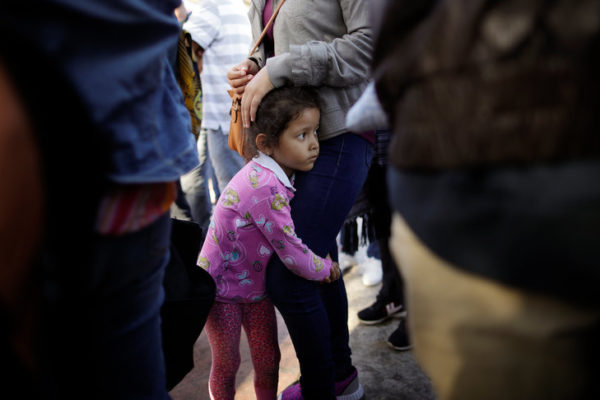The stark images of separated children and parents in cages, and the total chaos of the vast immigration detention system has outraged the American public. Yet, the incarceration of immigrants, including families and asylum seekers, is nothing new.
Although the immigration system is a civil system, it does not operate as such. Immigrants seeking asylum or other legal status in this country are treated as criminals but provided with fewer due process protections. Currently, more than 40,000 immigrants are incarcerated every day in a sprawling array of mostly for-profit private facilities.
An utter lack of transparency and incompetence have been hallmarks of detention. Now, the Department of Homeland Security has admitted that it destroyed records that would identify separated children and their parents. The focus on abducted children has highlighted the problems that immigration advocates, including myself, have complained about for years. Abhorrent conditions, sexual abuse, inadequate food, lack of medical care and deaths in detention have been repeatedly documented. Although nothing in the detention system changes, the response of the current administration has been to push for expanded and longer detention.
The public response to the current crisis has been encouraging. It has helped to expose the inherent wrongs of detention that have existed for years. Immigrants arrested in the Rio Grande Valley in Texas have always been held in Border Patrol’s freezing and crowded cells, referred to by immigrants as “hieleras” (ice boxes) and “perreras” (dog kennels). It is just that this hidden gulag has now sprung into public vision.
In most facilities, immigrants in the so-called civil system are clothed in prison jump suits. They are transferred at will across the country from one detention center to another, even when they have a lawyer representing them. For example, separated parents were moved from Laredo, Texas to Tacoma, Washington. Detained Indigenous language speakers cannot convey basics needs and legal claims or find their children.
There are insufficient interpreters for this population and phone interpretation lines are frequently broken. Attorneys may only communicate with clients by leaving messages which may or may not be delivered. Waiting times to see clients can be up to three hours and attorneys must share the few visitation rooms at the facilities. At the Hutto Detention Center in Taylor, Texas, where many separated mothers are now incarcerated, the visitation rooms consist of see-through plastic cubicles that are not sound-proof or vision-proof.
Despite the striking similarities with the prison model, immigrants are not entitled to court appointed lawyers. This makes navigating the detention and immigration court system nearly impossible for the vast majority of immigrants who are unable to secure counsel.
Trump’s calls for prolonged detention for everyone, including families, should not be the model. Detention for families has horrific and traumatic consequences, as I personally know, having worked in family detention centers since 2006 when the notorious T. Don Hutto facility was run by CoreCivic, one of the largest prison company in the country. Children and their parents were housed in jail cells in a former medium security prison, dressed in prison uniforms, and subjected to a strict prison regime. There was no free movement, no pediatrician on staff and no education for the children. This set-up was perfectly acceptable to CoreCivic, as it maximized its profits.
Alternatives to for-profit incarceration are not binary- that is, either the separation of parents or prolonged family detention. Across- the- board detention is not required or appropriate. Under a civil system, detention should be the last alternative, not the first. An individualized assessment of flight risk and danger are the legal standards that must be applied before depriving any person of her liberty interest. Absent exceptional circumstances, immigrants should be released to their families or into the community. Community based alternatives are much cheaper and more effective than the costs of the over-detention.
Providing adequate funding to non-profit organizations for universal legal representation is another cost-effective solution. Legal counsel is the primary controlling factor in appearance rates in immigration court. One recent study demonstrated that 97 percent of families with lawyers attend their court hearings. Immigrants who are represented by attorneys have a much higher chance of success in their cases than those forced to navigate the complexities of the system on their own.
Having caught a glimpse of the inhumanity of the immigrant detention system, the American public should take a fresh look at over-incarceration and urge the adoption of community-based alternatives and legal representation to allow adults and children to pursue their cases. We can do better, much better.
Barbara Hines is retired clinical professor of law at The University of Texas at Austin.
A version of this op-ed appeared in the Ausitn American Statesman.
To view more op-eds from Texas Perspectives, click here.
Like us on Facebook.




